|
|
Calling all Photographers
Earlier this year, we dazzled our readers with outstanding photographs when we published the winning entries from the 2001 photo contest. Now, it's time to announce our third annual contest and to encourage all shutterbugs to "get clicking." Entries are open to anyone who subscribes to the magazine and members of their immediate household, except for Department of Natural Resources employees. Winning photos will be published in the February 2003 issue.
The grand prize package will go to the winner of the "Rest of Show." It includes weekend lodging at White Pines Inn at White Pines State Park near Oregon and the Illinois Conservation Foundation's custom-framed, signed and numbered, limited edition print, "Winter Refuge" by John S. Eberhardt. First- and second-place winners in all other categories will receive three-year and two-year subscriptions, respectively, to OutdoorIllinois and an opportunity have their winning photos published in the February issue.
|
|
Categories:
1. Wildlife
2. Backyard/urban wildlife
3. Scenic/flora
4. Recreational activities
Contest guidelines:
All entries must have been photographed in Illinois. Photos of captive and domestic species will not be considered.
Entries are limited to color slides and mounted 8x10 color prints. (Mounted means the photo must be adhered to mounting board, foam board or cardboard or be appropriately matted for display.) The photographer must be willing to provide the original slide or negative for winning print entries.
Important: Each entrant must specify the total number of slides or prints being entered. Although we will do our best to protect images, OutdoorIllinois cannot be responsible for lost or damaged entries.
Labeling: All print entries must be labeled with the following information:
1. Photographer's name, address, daytime phone number and email address (if applicable).
2. Category.
3. When and where the photograph was taken.
All slides must be labeled with the name of the photographer. The remainder of the above-listed information must be submitted on an index card accompanying each slide.
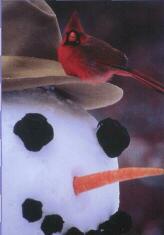
Deadline: The deadline for entering is Oct. 31, 2002, at 5 p.m. Entries received after that time will be automatically disqualified. Send all entries to: Photo Contest, OutdoorIllinois, One Natural Resources Way, Springfield, IL 62702-1271.
Return of images: If you want your images returned, your entry must be accompanied by a self-addressed return envelope with sufficient postage. Entries submitted without return envelopes and postage will be discarded following the judging. Winning entries will not be returned until after winners are published in the February 2003 issue.
Judges: All entries will be judged by a panel of photo experts. Winners will be notified after the judging is completed.
Winning entries: By virtue of their entry, contestants agree that Outdoorlllinois may publish their photographs for future magazine use, including the annual OutdoorIllinois calendar. Photos also may be used to promote the contest on the Department of Natural Resources' website. A photo credit will be given.
|
5 May 2002
|
Camera Clues
Good photos are no accident. They take patience and planning.
STORY AND PHOTOS
BY ADELE HODDE
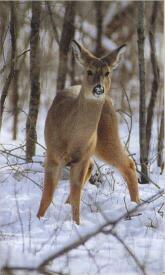
The difference between a good photograph and a great one can simply be the composition of the image. We all want photos correctly exposed and sharp, but we should also want the picture to spark the interest of the viewers. Here at the magazine, we use our pictures to tell a story, educate our subscribers
and to allow for the enjoyment of the natural beauty of nature.
We are very fortunate in Illinois to have wonderfully managed state parks and natural areas where you can find an abundance of wildlife to photograph. The first time you capture a deer on film is a thrilling experience even when the image is not extremely sharp. As you progress in your photography, you will start to look at the rays of light shining through the trees and realize the golden glow they put on the deer is an image worth capturing.
Spring time is absolutely beautiful, providing photographers with a variety of subjects to shoot, such as wildflowers, birds and lush scenics. We also have waterfalls at Starved Rock, Matthiessen and Ferne Clyffe state parks, just to name a few, that make for great images.
In order to get the best shots, I strongly recommend a lightweight but sturdy tripod-one that can lower to ground level for close-ups. After a day of hiking and carrying camera gear, you will appreciate this advice. I have heard of photographers who have missed great shots because they were worn out from carrying tons of gear in the field. Take only the gear you need, and leave the extras behind.
You're probably thinking that wildflowers are a breeze to shoot-right? I mean you basically find them everywhere—a beautiful field of purple coneflowers and brown-eyed susans, or maybe a single columbine blossom. They are just standing in the field waiting for you to click the shutter. But you need to realize that in order to have the image sharp from the flowers in the foreground to those 100 yards away, you will need the maximum depth of field. The same will be needed to shoot a single flower with a macro lens. If you want that flower to be sharp from the tip of the petal, to the stamens and pistil, it will require a slow shutter speed, a tripod and patience.
A wonderful breeze also can be a problem. When I set up my tripod, I sometimes find myself pleading with the wind to
|
6 OutdoorIllinois
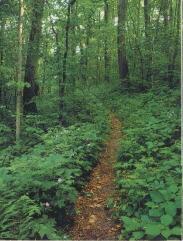
|
Whether it's a spider's web at Silver Springs State Park (right), Sentinel Trail at Mississippi Palisades (left) or painted turtles at Sangchris Lake (below), Illinois state parks provide a wealth of excellent photo opportunities. |
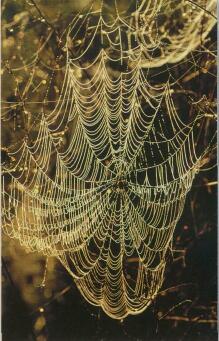
|
die down, but it ignores me. Then I start counting the ants crawling around, waiting patiently for a second of stillness. It comes and I quickly shoot. But since I'm not positive I got an outstanding shot, I wait for another moment of stillness. Taking multiple pictures increases the odds of capturing the perfect image.
You probably have seen photographs of billowing water in a creek bed or a cascading waterfall. Those, too, require a tripod and a slow shutter speed with a maximum of a 15th of a second exposure.
I recommend shooting with the slowest ASA film you feel comfortable using. Most nature and wildlife photographers use ASA 50 or 100 slide film. It is a finer grain and overall better-quality film. I shoot Fuji's 50 ASA film for fishing and hunting stories, too.
We all enjoy toys and gadgets, but I contend you really don't need to spend money on fancy cameras. Zoom lenses and long lenses are a plus, but not essential to great shots.
I rarely set my camera on automatic as I prefer using a handheld meter and a manual setting. I have seen photographers shoot a pheasant in snow, with their cameras on automatic. Later, they wondered why their images of the bird looked black, with no detail, on dingy looking snow. It's because all camera meters are set to read 18-percent gray. For example, if you take a picture of a black horse and another picture of a white horse, they will both appear gray if you rely on the camera's meter. Most cameras will let you override the meter or set it manually. Your camera's instruction book should address this, and libraries or bookstores can provide a wealth of information.
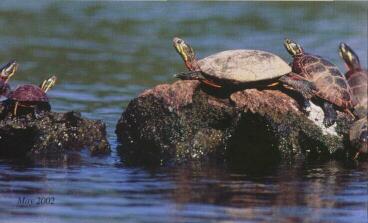
Now, let's go over a few basics. Look at your background when shooting. Make sure there is not a distraction that will take away from your focal point. You don't want a marina parking lot full of cars
behind your grandson with that huge bass. Turn him around and have the lake in the background. If you plan on taking pictures of birds feeding in your backyard, check out what will be in the background. A power pole or garage wouldn't be as pretty as a tree or shrub.
The early morning and late afternoon light will add warmth to your photographs. For wildflowers, I prefer shooting on overcast days, as bright, sunny days wash out their color.
Don't just take a shot—work it. Check out all the angles, and find the one that makes the object you are photographing stand out. Usually a dark background does best, such as a log or leaves in the shadows.
It is impossible in a short article to cover all the tips for getting good shots, so you'll be glad to know this issue also includes underwater photography tips. (See the sidebar to the Mermet Springs story.)
Anyway, it's spring and time to put on your walking shoes, grab some film, a camera and a tripod and enjoy the great outdoors. Start capturing images that reflect your love of nature.
|
May 2002 7
|

